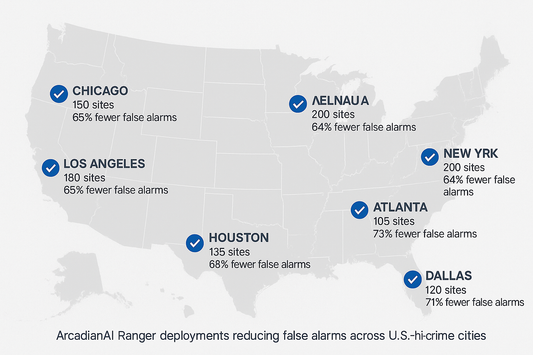Ring Launches AI-Powered “Video Descriptions” to Enhance Smart Security Alerts for Home Owners
Amazon-owned Ring announced on Wednesday that it’s introducing a new AI-powered feature to its doorbells and cameras, which offers users specific text descriptions of current motion activity. Now, when users receive real-time notifications about happenings at their property, the updates will be more descriptive. For instance, “A person is walking up the steps with a black dog,” or “Two individuals are looking into a white car parked in the driveway.”

Story
Amazon-owned Ring has introduced a major update to its suite of security cameras and video doorbells. The new feature, called Video Descriptions, uses generative AI to deliver detailed summaries of motion events captured on camera. This marks a significant leap forward in how users engage with home security—moving beyond vague push alerts to contextual, meaningful insights in real time.
Available starting June 25, 2025, for Ring Home Premium subscribers in the U.S. and Canada, this feature is part of Ring’s broader push to incorporate artificial intelligence into everyday home protection without requiring extra hardware upgrades.
What Are Video Descriptions?
Rather than sending generic motion alerts like “Motion Detected” or “Person at Your Door,” Ring’s AI now provides highly specific notifications. For example, instead of a standard motion ping, users might see alerts such as:
- “A woman in a red jacket is placing a package at your front door.”
- “Two people are walking past your driveway with a golden retriever.”
- “Someone is opening your side gate and entering the backyard.”
These descriptions are generated using visual language models that analyze the first few seconds of each motion event and summarize what’s happening in a human-readable sentence. Ring says the system is trained to identify the primary subject and deliver a focused update that helps users decide whether they need to take action.
This feature can be toggled on or off within the Ring app, giving users full control over how much detail they receive.
How the AI Works
Ring's Video Descriptions are powered by visual language models (VLMs), a type of AI that combines image recognition with natural language generation. These models have been trained on thousands of real-world security scenarios to understand how to identify and summarize the most relevant activity in a frame.
Once motion is detected, the AI rapidly processes the initial footage, extracts the main action, and converts it into a concise sentence. According to Ring engineers, the system is designed to avoid describing irrelevant background motion and to zero in on what truly matters to the homeowner.
This generative approach is also a foundation for future capabilities Ring plans to introduce—including anomaly detection, grouped event notifications, and behavior-based alerts that adapt to each user's specific environment.
Who Can Use It and How
The feature is rolling out in beta exclusively to Ring Home Premium subscribers in the United States and Canada. It supports all existing Ring doorbells and security cameras, as long as they are connected to the cloud and have motion detection enabled.
At launch, the feature supports only English-language summaries and is available through the Ring mobile app. According to Ring, the system will continue improving over time as it learns from user feedback and new data.
To enable the feature, users can navigate to the “Smart Alerts” section of the Ring app and toggle on “Video Descriptions.”
How It Stands Out in a Competitive Market
The smart home security space has seen a steady increase in AI-enhanced features, with competitors like Arlo, Google Nest, and Wyze offering their own versions of intelligent alerts. However, Ring’s implementation of generative AI sets it apart in a few key ways.
First, while competitors often rely on object detection to notify users that “a person” or “a vehicle” has been detected, Ring’s Video Descriptions go a step further by summarizing the entire scene. This offers better situational awareness and reduces the guesswork that comes with reviewing footage.
Second, Ring’s design philosophy favors real-time human readability over technical accuracy. Instead of overloading users with raw data or object labels, it delivers easy-to-digest updates in plain language.
Finally, Ring assures that all descriptions are generated in real time and are not stored or used to train external models, addressing some of the privacy concerns typically associated with AI surveillance.
Addressing Privacy and Misuse Concerns
While Ring emphasizes that the Video Descriptions feature is processed on the cloud and the text summaries are not retained or shared, privacy advocates continue to express caution. The ability to describe behaviors in detail—such as someone “looking into a window” or “hovering near a parked car”—raises questions about potential surveillance overreach or profiling.
Ring claims the feature is focused solely on empowering users with better context for motion events and is not intended for facial recognition or individual identification. The company also notes that users can disable the feature at any time and revert to traditional alert formats.
Accuracy is another area of scrutiny. As with any AI-powered system, there’s a chance the system could misclassify scenes, generate incomplete or misleading descriptions, or miss subtle but important context. However, Ring says early user testing shows a strong accuracy rate in most residential environments.
Looking Ahead: Smarter Security Is Becoming Standard
Video Descriptions are just the beginning of Ring’s vision for intelligent security. Future iterations may include anomaly-based detection that learns what is “normal” for each specific property and only notifies users when something deviates from those patterns.
This could reduce false alerts dramatically, a long-standing issue for users with busy streets, frequent package deliveries, or active pets. Ring’s roadmap also includes grouping similar motion events together—such as multiple package deliveries in a short timeframe—so that users can review their security footage more efficiently.
These features, combined with Amazon’s broader Alexa ecosystem and smart home integrations, position Ring as a leading innovator in proactive, AI-driven home protection.
Conclusion
Ring’s new AI-powered Video Descriptions reflect a growing trend toward context-aware, smarter security solutions that save time and reduce user frustration. By blending computer vision and language generation into a seamless alert system, Ring aims to make home monitoring both more intelligent and more human.
For homeowners looking to stay informed without being overwhelmed by noise, this feature could be a game changer. And as AI models continue to evolve, it’s clear the future of security isn’t just about cameras—it’s about understanding what those cameras see.
Source: Link

Security is like insurance—until you need it, you don’t think about it.
But when something goes wrong? Break-ins, theft, liability claims—suddenly, it’s all you think about.
ArcadianAI upgrades your security to the AI era—no new hardware, no sky-high costs, just smart protection that works.
→ Stop security incidents before they happen
→ Cut security costs without cutting corners
→ Run your business without the worry
Because the best security isn’t reactive—it’s proactive.






